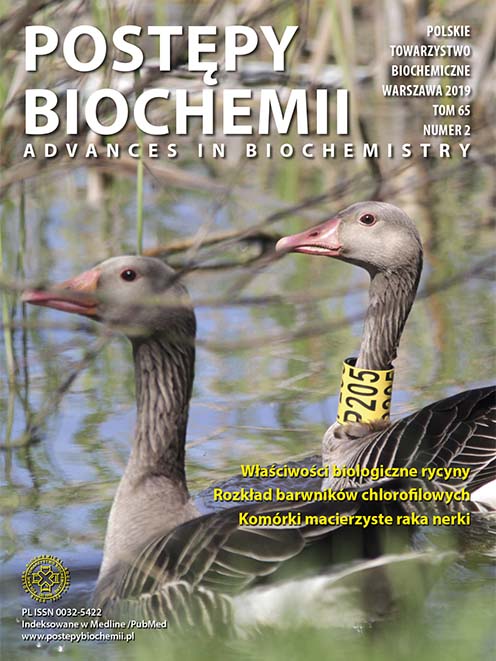Biochemical and physiological aspects of chlorophyll breakdown
DOI:
https://doi.org/10.18388/pb.2019_261Abstract
During leaf senescence and fruit ripening chlorophyll is broken down into nonfluorescent catabolites (NCCs). The chlorophyll degradation pathway includes a series of biochemical transformations ocurring sequentially in chloroplasts, cytosol and vacuoles. The path begins with enzymatic reduction of chlorophyll b to chlorophyll a. Next, the specific dechelatase and esterase remove the magnesium atom and the phytol chain resulting in the formation of pheophorbide a. In the next step, the porphyrin macroring is opened by pheophorbide a oxygenase and red catabolite reductase. The product of this transformation is an early fluorescent catabolite (pFCC), which after hydroxylation and species-specific modifications is imported into the vacuole. In acidic medium of the vacuole pFCC undergo isomerization to their respective colorless NCCs, which are final chlorophyll degradation products in higher plants. There are still no answers to a number of questions about the fate and significance of millions tons of chlorophyll catabolites released annually in the aquatic environment as a result of cellular senescence and death of phytoplankton. A few reports indicate that algae and cyanobacteria may metabolize their photosynthetic pigments in a similar way as higher plants do, however, the course of chlorophyll breakdown in these organisms has not been yet elucidated.
Downloads
Published
Issue
Section
License
All journal contents are distributed under the Creative Commons Attribution-ShareAlike 4.0 International (CC BY-SA 4.0) license. Everybody may use the content following terms: Attribution — You must give appropriate credit, provide a link to the license, and indicate if changes were made, ShareAlike — If you remix, transform, or build upon the material, you must distribute your contributions under the same license as the original. There are no additional restrictions — You may not apply legal terms or technological measures that legally restrict others from doing anything the license permits.
Copyright for all published papers © stays with the authors.
Copyright for the journal: © Polish Biochemical Society.




